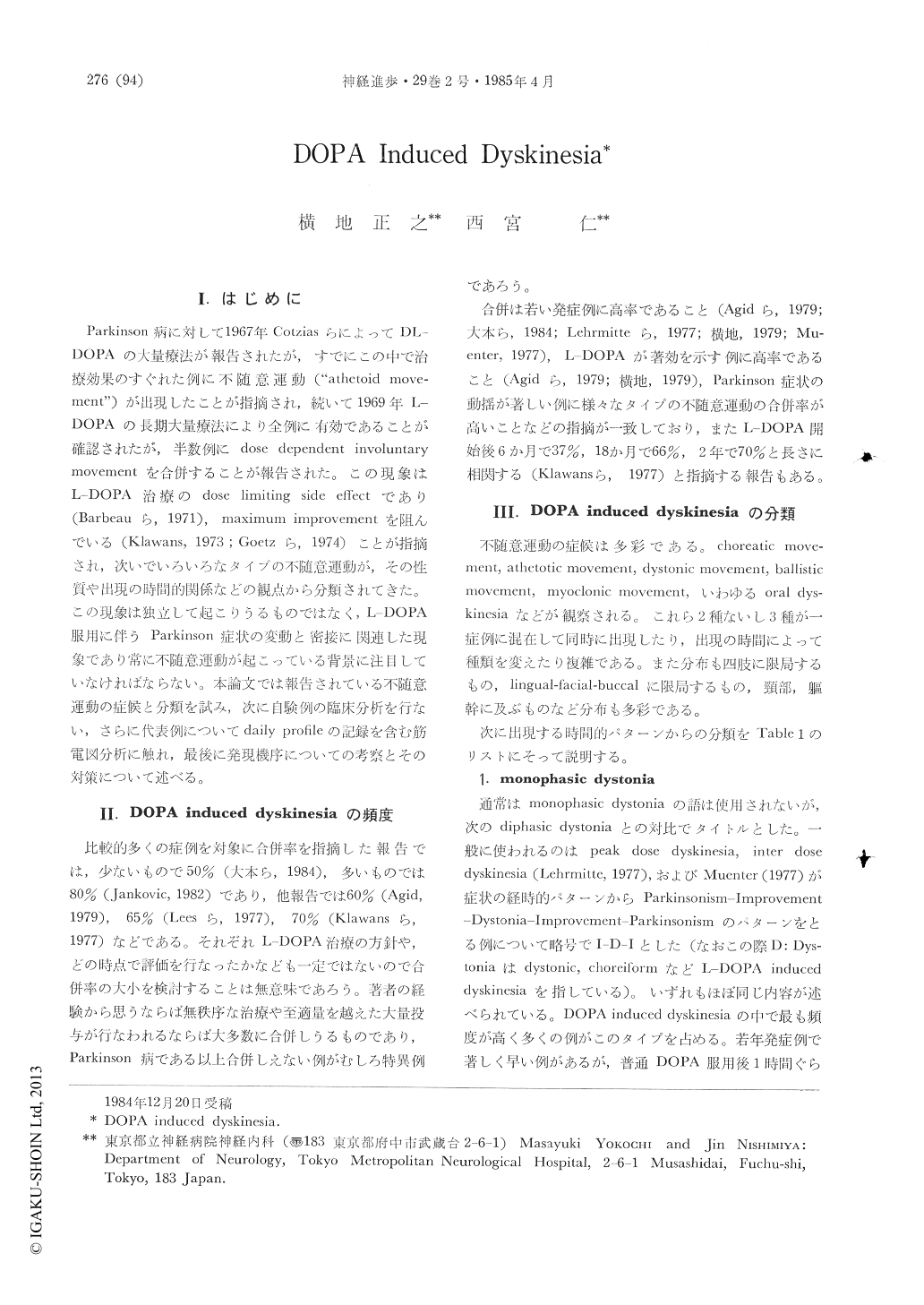Japanese
English
- 有料閲覧
- Abstract 文献概要
- 1ページ目 Look Inside
I.はじめに
Parkinson病に対して1967年CotziasらによってDL-DOPAの大量療法が報告されたが,すでにこの中で治療効果のすぐれた例に不随意運動("athetoid movement")が出現したことが指摘され,続いて1969年L-DOPAの長期大量療法により全例に有効であることが確認されたが,半数例にdose dependent involuntary movementを合併することが報告された。この現象はL-DOPA治療のdose limiting side effectであり(Barbcauら,1971),maximum improvementを阻んでいる(Klawans,1973;Goetzら,1974)ことが指摘され,次いでいろいろなタイプの不随意運動が,その性質や出現の時間的関係などの観点から分類されてきた。この現象は独立して起こりうるものではなく,L-DOPA服用に伴うParkinson症状の変動と密接に関連した現象であり常に不随意運動が起こっている背景に注目していなければならない。本論文では報告されている不随意運動の症候と分類を試み,次に自験例の臨床分析を行ない,さらに代表例についてdaily profileの記録を含む筋電図分析に触れ,最後に発現機序についての考察とその対策について述べる。
One of the troublesome and high incidentaladverse effect of long-term L-DOPA and dopamine agonist therapy in Parkinson's disease is the occurrence of induced dyskinesia accompanied with "up and down" effect and/or "on-off" phenomena. Unfortunately, this adverse effect often limits the dosage of L-DOPA a patient can tolerate and the maximum improvement by L-DOPA efficacy.
Fifty-eight patients (28 men, 30 women) with Parkinson's disease treated with L-DOPA or L-DOPA combined with decarboxylase inhibitor (Benserazide or Carbidopa) were analyzed in clinical aspects of induced dyskinesia.

Copyright © 1985, Igaku-Shoin Ltd. All rights reserved.


